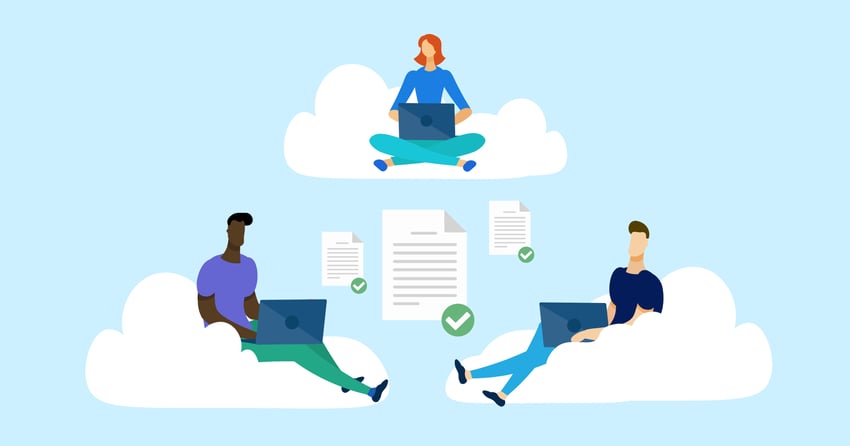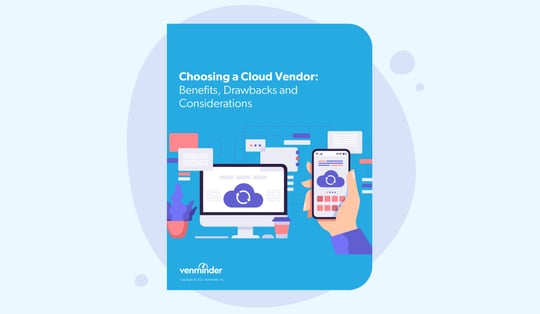Though cloud technology has been around for several years, the pandemic and the shift to remote work has made more organizations turn to cloud technologies to make operations easier to manage. However, there are many risks associated with cloud software, especially as malicious actors search for vulnerabilities that make it possible to infiltrate private networks and steal sensitive data.
So, what should you do when your vendor decides to migrate and use the cloud for data storage? Let’s look at the types of risks the cloud can pose to your organization, and several best practices for managing the risks.
Understanding Cloud Vendor Risks
For many organizations, cloud storage technology offers great benefits, including unlimited data storage, lowered cost, and increased agility and availability to your data. However, the cloud is also the home to many risks that threaten your data’s privacy. When your cloud vendor decides to migrate to the cloud, you need to understand the risks so that you can take the appropriate steps to identify and manage any vulnerabilities.
Here are a few cloud vendor risks and how they can threaten your organization:
- Data security. As malicious actors continue to exploit vulnerabilities in the supply chain and the cloud to steal sensitive data, you need to determine whether the proper controls are in place to protect your organization’s data. Who will have access to your data? Does the vendor’s security policy when dealing with the cloud align with your organization’s security policy? What measures are in place to identify suspicious activity? Will your vendor perform ongoing monitoring activities? These are all important questions to consider.
- Compliance. As lawmakers and regulators continue to make waves and update security guidelines, you need to ensure that your organization and your cloud vendors comply. Otherwise, your organization may face legal action, fines, and reputational damages. Be sure to stay updated on new regulations, and assess your vendor’s practices, as well.
- Data loss. In the migration to the cloud, you need to ensure that your data won’t be lost or corrupted. Data loss can have severe consequences to your organization’s operations, so you should work with your vendor to back up your data, so that any lost files can be recovered.
- Productivity. Will the cloud migration affect your organization’s productivity? It’s important to verify whether the change in cloud storage will impact the vendor’s products or services, and whether that will impact your organization’s operations or production. Operational downtime can lead to negative consequences for your organization, so you need to understand the implications of cloud storage.
- Lack of visibility. When it comes to your data, you want control over who has access into your organization’s information. It’s critical that the cloud technology has the controls in place to provide monitoring and real time alerts, so that you have the visibility into exactly how and why your data has been accessed.
In any vendor relationship, there are risks, which are increased in cases where a third party has access to your data. However, as malicious actors continue to seek vulnerabilities in the cloud and data privacy concerns continue to grow, you need to have a clear understanding of the risks your vendor’s move to the cloud can have on your organization.

Best Practices for Managing Cloud Vendor Risks
The cloud can provide many benefits for many organizations, but you shouldn’t overlook the different threats to your organization’s sensitive data.
So, if your vendor decides to move to the cloud, you should keep the following best practices in mind:
- Ask questions to better understand key points such as security controls, your vendor’s disaster recovery and business continuity plans, and where your data will live. Your vendors need to have satisfactory answers.
- Require detailed documentation on your vendor and the cloud provider’s policies and procedures.
- Communicate your expectations, especially when it comes to your data’s privacy and accessibility.
- Ask your vendors to provide a regulatory audit to ensure that they comply with the necessary guidelines.
- Request a CAIQ and have it assessed. A CAIQ is an industry-accepted way to document what security controls exist in IaaS, PaaS, and SaaS environments and is available through the CSA (Cloud Security Alliance). If your vendor has a CAIQ completed, you should have it assessed to ensure their posture aligns with your expectations, the cloud control matrix, and industry best practices.
- Put plans in place to limit access to only privileged users. Your data shouldn’t be available to just anyone.
- Make sure you have an exit strategy in place, in the case an issue arises. Your vendor should also have an exit strategy and provisions in their contract.
- Perform ongoing monitoring to assess security controls.
When it comes to your data’s privacy and protection, you can’t be too careful. So, if your vendor decides to migrate to cloud technology, you need to be prepared to ask questions and thoroughly assess the security measures in place. Performing the proper assessments can make all the difference between securing your information and becoming the victim of a data breach.












